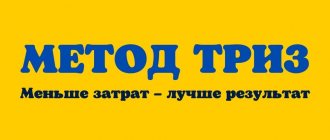Options for classes using an interactive whiteboard
Svetlana Kuzyashina
Options for classes using an interactive whiteboard
OPTIONS FOR CLASSES USING AN INTERACTIVE BOARD
S. P. Kuzyashina, teacher,
MADO "Kindergarten No. 39 "Romashka",
Vidnoe Moscow region
An interactive whiteboard various situations during .
Thus, the cognitive activity of students is activated, and the educational material is better absorbed.
For example, when working with the lexical topic “Wild Birds”
in the older group, you can
use a board to compose bird families on it, to play interactive games using the “fourth is the odd one out”
, to compose birds and individual body parts, to play
“connect mother and chick,”
and so on. Or, after watching a multimedia presentation, invite children to write a descriptive story about poultry, etc.
The board can also when studying the sound system of a language, for example, when studying the softness of sounds, you can group pictures into two columns according to the softness and hardness of sounds. So, pictures that have the sound “t”
moves to the left, and the picture with the sound
“th”
moves to the right.
Using an interactive whiteboard in the kindergarten, it is possible to make virtual trips and conduct interactive classes .
It is known that older preschoolers have better developed involuntary attention, which becomes especially concentrated when children are interested . Their speed of receiving and processing information increases, and they remember it better. For a virtual trip, you can take any lexical topic, for example, “Space”
.
For classes in the middle group, you can develop entire journeys with fairy-tale characters, helping them cope with obstacles by solving intellectual problems and completing interactive tasks .
Currently, there are not many ready-made interactive resources interactive whiteboard software for working with preschoolers. Therefore, it would be good to create your own collection of classes developed on your own using Digital Educational Resources.
To optimally use an interactive whiteboard when working with preschoolers, it is necessary to follow the following methodological recommendations:
— The interactive whiteboard should be used when working with preschoolers, subject to unconditional compliance with physiological-hygienic, ergonomic and psychological-pedagogical restrictive and permissive norms and recommendations.
— The information and didactic aids used must be adequate to the psychological and psychophysiological capabilities of the child.
— The organization and methodology of conducting classes with ID corresponds to the methodology of conducting traditional classes and the basic didactic principles of preschool pedagogy. A lesson using ID includes several parts. And only one part is devoted directly to working with ID.
— When preparing for classes using ID, it is necessary to take into account the existing knowledge acquired in traditional classes during the implementation of the main educational program.
— ID should be a didactic tool, not a self.
— It is necessary to use a traditional subject-development environment in classes with ID - toys, games, demonstration material, etc.
options are currently used .
1. A subgroup of children stands at the blackboard , and the children take turns doing the task at the blackboard .
2-3 children perform at using a stylus (computer mouse)
and markers.
3. Children offer answer options to the child completing the task for the ID.
4. The child independently completes the task at the ID, and the children sitting at the tables check and evaluate the correctness of the ID’s work.
5. Children sitting at the tables give a task to the child working at the ID.
6. One child works at the board , the rest do the same task at the computers.
Benefits of working with an interactive whiteboard .
1. The supply of material is increased.
2. The teacher is in constant interaction with children.
3. Electronic learning tools convey information faster than traditional ones.
4. The perception of the material is expanded by increasing the volume of illustrative material.
5. Motivation develops, activities become more interesting for children .
6. Children begin to understand more complex points thanks to a clear and dynamic presentation of the material.
In addition to the interactive whiteboard, some preschool organizations purchase smart tables.
An interactive table is an interactive learning center with a touch surface that is controlled by the touch of a person’s hands or other objects.
It is the first multi-use touch table to effectively engage students in learning. SMART Table was specifically designed for young children (preschoolers to sixth graders)
and gives them the opportunity to jointly complete
interactive tasks and participate in educational and developmental games.
To effectively organize work with the SMART Table, the teacher must master a system of didactic elements - didactic games, the use of which will expand and deepen the educational space of the kindergarten and open up additional opportunities for the comprehensive development of the child.
Sources:
1. Program “From birth to school”
, developed by a team of authors edited by N. E. Veraksa, T. S. Komarova, M. A. Vasilyeva.
An interesting new product - how to work with it?
An interactive whiteboard is a touch screen that works in conjunction with a computer and a projector. Unlike a regular screen, it works as an information input device, so you can use it to play useful logic games and simply learn with interest. Therefore, this device will be equally relevant in both the junior and preparatory groups.
Perhaps the only difficulty in working with this device is the insufficient level of proficiency in ICT technology for a particular teacher. But this should not stop you, because you need to strive to learn something new and never stop learning.
For this purpose, preschool educators, teachers, as well as all teaching staff, I suggest that you familiarize yourself with the manual on this topic, “Organization of the information and technical space of an educational institution: media library, interactive whiteboards.”
Perhaps someone will be interested in a special offer from the UchMag online store to top up a personal account and issue a certificate for participating in a webinar on the topic “ICT in the professional activities of a teacher of further education” for 2 hours. The webinar will discuss six important questions that will help you understand the issues of ICT and the use of interactive whiteboards in kindergarten.
You can also take part in the offline webinar “ICT in the professional activities of a geography teacher”, because teachers even more often have to work with an interactive whiteboard, so short-term training will be very useful.
Using interactive equipment with preschool children
Bibliographic description:
Boyko, E. V. Using interactive equipment with preschool children / E. V. Boyko. — Text: direct // Education and upbringing. — 2022. — No. 1.1 (11.1). — P. 3-5. — URL: https://moluch.ru/th/4/archive/52/1765/ (access date: 01/18/2022).
Keywords: Interactive technologies, preschool age, interactive whiteboard, interactive table, sensory room, multimedia.
Currently, information and communication technologies are actively being introduced into the educational process of preschool educational organizations. Interactive equipment is actively entering our lives, becoming a necessary and important attribute not only in the life of adults, but also as a means of teaching children.
The use of modern computers in working with preschool children is just beginning. Currently, this is due to the need for significant changes in the preschool education system. The success of these changes is associated with updating the scientific, methodological and material base of the preschool institution. There are various interactive tools aimed at developing various mental functions of children, such as visual and auditory perception, attention, memory, verbal and logical thinking, etc., which can be successfully used in teaching preschool children.
Gradually, interactive technologies are increasingly becoming part of the lives of both adults and children. All children watch their parents spend several hours a day in front of a computer or laptop screen. Modern childhood can no longer be imagined without technological equipment. Now in preschool educational institutions there is an active practice of introducing interactive equipment into the educational process, which is specially adapted for classes with children. This allows you to take your training to a new level and get positive results. Teaching preschool children becomes more attractive and exciting. Interactive and multimedia tools are designed to inspire and encourage them to strive to acquire new knowledge. An interactive whiteboard significantly expands the possibilities of presenting educational information and allows you to increase the child’s motivation. The use of multimedia technologies (color, graphics, sound, modern video equipment) allows you to simulate various situations and environments. Game components included in multimedia programs activate the cognitive activity of students and enhance the assimilation of the material.
Interactive and multimedia tools have significantly expanded the possibilities of the presented cognitive material and made it possible to increase the child’s motivation to master new knowledge.
The use of interactive technologies allows us to move from an explanatory and illustrated method of teaching to an activity-based one, in which the child takes an active part in this activity. The introduction of computer technologies in a new and entertaining form for preschoolers helps solve problems of speech, mathematical, environmental, aesthetic development, and also helps to develop memory, imagination, creativity, spatial orientation skills, logical and abstract thinking. The use of interactive technologies in the educational process of preschool educational institutions presupposes the presence of interactive equipment. These are computers, interactive whiteboards, multimedia equipment, and a smart table.
The advantages of using interactive equipment in the education of preschool children include the following:
—The educational process in a preschool educational institution can be more successful and effective if a computer and interactive technologies are used as a didactic tool.
—Using an interactive whiteboard as a means of demonstrating visual material increases children’s interest in the lesson. Moreover, this method carries a figurative type of information that is well understood by preschoolers.
—The ability to manipulate objects on the screen can attract a child’s attention for a long time.
—Using an interactive whiteboard, as a rule, involves encouraging a child to correctly complete a task using the computer itself, which is a stimulus for cognitive activity in both older and younger preschoolers.
—With the use of a smart table, the individualization of learning increases - the child can complete tasks at a pace convenient for him, the computer is patient and waits for the child to come to the right decision.
—The use of information technology helps to simulate situations that are difficult to observe and play out using traditional forms of teaching. For example, the study of space objects.
Thus, the following conclusions can be drawn:
— the use of information and communication technologies in a preschool institution is an enriching and transformative factor in the developmental subject environment.
— interactive equipment can be used in working with children of senior preschool age, subject to unconditional compliance with physiological-hygienic, ergonomic and psychological-pedagogical restrictive and permissive norms and recommendations.
— it is necessary to introduce modern information technologies into the kindergarten didactics system, i.e., strive for an organic combination of traditional and computer means of developing the child’s personality.
But at the same time, we must remember that interactive equipment cannot replace emotional human communication, which is so necessary in preschool age. The computer only complements the teacher, and does not replace him.
In the survey, the majority of gardens use the following interactive equipment:
1) An interactive whiteboard is a universal tool that allows any teacher to organize the educational process in such a way that children’s interest in classes, stability of attention, and speed of mental operations increase.
The experience of using an interactive whiteboard shows that teaching and raising preschoolers with disabilities has become more attractive and exciting. Interactive whiteboards have significantly expanded the possibilities of presented cognitive material and made it possible to increase the child’s motivation to master new knowledge. The board is used in almost all classes - Familiarization with the outside world, Mathematics, Speech development, Preparation for literacy, integrated classes. Game components included in multimedia programs activate children’s cognitive activity and enhance the effectiveness of learning material. For example, when immersed in the lexical topic “Domestic Birds” during a lesson on familiarizing themselves with the world around them, children are happy to make up bird families on the board, play the interactive game “Odd Four,” and generalize knowledge about the appearance of domestic birds in the game “Beaks, Paws and tails” - make up a bird on the board from individual parts of the body. During the speech development class, the interactive game “Bird’s Canteen” (with provocations) and “Pick up a mother and baby” were a success. In the interactive game “Name it kindly,” children practiced word formation. When developing coherent speech, they composed a descriptive story about poultry after watching a multimedia presentation. In a lesson in preparation for learning to read and write, when familiarizing themselves with the sounds {K - Kb} and the letter K, children grouped pictures on the interactive board depending on the hardness and softness of the sound in the word, using a diagram to determine the place of the sounds {K - Kb} in the word (beginning , middle, end), performed a sound-letter analysis of words on the lexical topic “Poultry”. It was easier for the educational psychologist to attract and hold the attention of children for a longer time. When working with an interactive whiteboard, the fatigue and satiety of children decreased, since the educational material presented to children was distinguished by clarity, brightness of images and dynamism.
2) Smart table. Interactive table - is an interactive learning center with a touch surface that is controlled by the touch of a person’s hands or other objects. This is the first multifunctional touch table that allows you to effectively involve children in the learning process. The SMART table was specially designed for preschool children and gives them the opportunity to jointly complete interactive tasks and participate in educational and developmental games. This table can serve as a computer since it already has a built-in processor, camera and projector. The table is compatible with a laptop, projector, screen, and the Internet. Working on an interactive table helps children develop cognitive, social and motor skills.
And this is the first advantage of using this equipment from the point of view of an educational psychologist : positive learning motivation develops . And motivation is the key to the success of any activity. It is clear that shy children, who normally shy away from their peers, have become more free, relaxed, enjoy their work, and sometimes even show signs of leadership in group tasks.
3) Sensory room - a magical room for relaxation, stress relief and relaxation. This room contains unique equipment - either special or made with one’s own hands - which allows the psychologist to gently work with his clients, carry out prevention and even treatment of the nervous system and sensory organs. There are different types of sensory rooms, but they all have one single goal - to help find personal harmony and harmony with the outside world, restore mental balance, and strengthen the nervous system. Depending on the task and method of conducting sessions, the sensory room is equipped with frameless furniture modules and light and music accompaniment, aromatic sensors, massage and interactive equipment. List of sensory room equipment: soft floor covering; dry shower; dry pool; floor sensory tracks; ribbed bridge; didactic tree; center of tactility; sand painting center; fine motor development center; audiovisual equipment, decorative light panels and electronic control devices for the complex.
Positional equipment includes frameless furniture - mats and soft chairs, pillows and experimental modules that adapt to the shape of the human body, relieving physical and mental stress and achieving maximum relaxation. As well as equipment and panels that develop sensory sensations - giant balls, small massage objects, mirror elements with fiber-optic illumination that help stimulate tactile and visual receptors. Sound-animated tactile panels for children's sensory rooms allow you to create interesting three-dimensional pictures, using your own ideas or according to an already proven scheme. Amazing fountains of light from LED cords. A great solution for a dark sensory room combined with a starry sky and relaxing music.
Preliminary results indicate that the use of interactive equipment in the educational process expands the didactic opportunities for children's learning and is accompanied, on the one hand, by an increase in the volume of the educational load, and on the other hand, it helps to increase the level of educational motivation on the part of preschoolers. The average duration of using an interactive whiteboard during the learning process is 15 minutes, and the time for preschoolers to directly work with it is within 10 minutes.
In conclusion, we can say that interactive equipment makes it possible to successfully solve problems: they develop free communication with adults and children, develop all components of children’s oral speech, and also contribute to preschoolers’ practical mastery of speech norms.
Literature:
- School Director magazine No. 4, 2010 “Safe use of interactive whiteboards.”
- Kalinina T.V. Management of preschool educational institutions. "New information technologies in preschool childhood." M, Sphere, 2008
- Novoselova S. L. Computer world of a preschooler. M.: New School, 1997
- Galishnikova E. M. Using an interactive Smart board in the learning process // Teacher. - 2012. - No. 4. - p. 8–10.
- Goryunova M. A. Interactive whiteboards and their use in the educational process (+ CD-ROM) /M. A. Goryunova, T. V. Semenova, M. N. Solonevicheva. - BHVP Petersburg, 2010.
Key terms
(automatically generated)
: interactive whiteboard, interactive equipment, preschool age, child, sensory room, activity, interactive game, interactive table, educational process, surrounding world.
USING AN INTERACTIVE BOARD IN WORKING WITH PRESCHOOL CHILDREN.
USING AN INTERACTIVE BOARD IN WORKING WITH PRESCHOOL CHILDREN.
Abstract: The article provides information about the interactive whiteboard used in the Baldauren kindergarten, a description is given, its purpose, the importance of ICT tools in the development of a child, how you can use the interactive whiteboard in working with teachers and preschool children. The topic of games with preschool children is presented, and an example of the game is given.
Currently, computer technologies have become actively used in the educational process. Many simple and complex computer programs are being created for various areas of knowledge. Depending on the age of the child and the programs used, the computer can act as an opponent in the game, be a storyteller, a tutor, or an examiner. There are various computer tools aimed at developing various mental functions of children, such as visual and auditory perception, attention, memory, verbal and logical thinking, etc., which can be successfully used in teaching preschool children. An interactive whiteboard is a touch screen that works as part of a system that also includes a computer and a projector. The computer transmits the signal to the projector. The projector displays the image on the interactive whiteboard. The interactive whiteboard works both as a regular screen and as a computer control device. You just need to touch the surface of the board to start working on your computer. A wireless mouse allows you to control the board from a distance. Common interactive whiteboard tools in our preschool educational institution:
- Pencil
makes it possible to emphasize part of a word, a whole word or sentence, or circle an image or word, thereby drawing students' attention to important information. You can also use a pencil to enter handwritten text on lesson slides and in Word, Excel, and Power Point documents. When working with this tool, you can choose the color and thickness of the line.
- Tool Lines
allows you to draw lines and arrows of different colors, types and thicknesses, and depict geometric shapes.
- Image Library
makes it possible to use static and animated images to create slides for educational activities, design the background of educational activity slides using pictures, change the size and location of pictures, and add sound to them. The built-in image libraries in WizTeach can be expanded with the images you need, or you can create your own image collections.
- Using a tool Inserting a picture
You can design slides with images taken from any folder on your computer or from different galleries.
- Tool Flashlight
makes it possible to open only part of the information on the slide. For example, highlight a certain area on a dark map.
- By using Magnifiers
You can focus students' attention on important details of the images shown by enlarging them.
- Virtual Keyboard
allows you to enter text in any of the languages installed on your computer. It can be used when creating slides or while demonstrating educational material, asking students to enter the correct answer or correct an intentional mistake in the text of the slide.
- This will help you quickly insert text into lesson slides. creating a text card
. This tool allows you to copy text from a Word document and transfer it to slides created in WizTeach.
- Tool Word bank
allows you to create educational tasks, for which you need to insert the correct words into a sentence or letters into words.
- You can erase written words or drawn images on a slide using Eraser
.
- Tool Cleaning the screen
makes it possible to instantly clear a filled slide.
Benefits of working with an interactive whiteboard
Teaching young children becomes more engaging and exciting. Interactive and multimedia tools are designed to inspire and encourage them to strive to acquire new knowledge. An interactive whiteboard significantly expands the possibilities of presenting educational information and allows you to increase the child’s motivation. The use of multimedia technologies (color, graphics, sound, modern video equipment) allows you to simulate various situations and environments. Game components included in multimedia programs activate the cognitive activity of students and enhance the assimilation of the material. Interactive teaching aids, such as interactive whiteboards and computers, will be excellent assistants in diagnosing child development:
- Development of attention
- In memory
- Thinking
- Speeches
- Personalities
- Study skills
Introduction to information culture is not only the acquisition of computer literacy, but also the acquisition of ethical, aesthetic and intellectual sensitivity. There is no doubt that children can master the methods of working with various electronic and computer innovations with enviable ease; At the same time, it is important that they do not become dependent on the computer, but value and strive for live, emotional human communication. It has been experimentally established that when presenting material orally, a child perceives and is able to process up to 1 thousand conventional units of information per minute, and when the visual organs are “connected”, up to 100 thousand such units. An older preschooler has better developed involuntary attention, which becomes especially concentrated when he is interested; the material being studied is clear, bright, and evokes positive emotions in the preschooler. The use of computers in joint and independent activities (from the child’s point of view) is one of the effective ways to increase motivation and individualize his learning, develop creative abilities and create a favorable emotional background. From which it follows that the high efficiency of using information and communication technologies in teaching is evident.
The use of ICT in kindergarten allows children to develop their ability to navigate the information flows of the world around them, master practical ways of working with information, and develop skills that allow them to exchange information using modern technical means.
The use of ICT in the classroom allows us to move from an explanatory and illustrated method of teaching to an activity-based one, in which the child becomes an active subject, and not a passive object of pedagogical influence. This promotes conscious learning by preschoolers.
The room for interactive activities in kindergarten performs the following tasks:
teach children using the latest educational technologies;
- serve as an entertainment and gaming center;
- it can perform the widest possible range of educational and entertainment tasks;
- have maximum ease of use for both children and teachers;
- introduce children to the capabilities and skills of computer technology.
Examples of using an interactive whiteboard
Learning using interactive complexes becomes better, more interesting and more productive. Provided that electronic multimedia educational programs are systematically used in the educational process in combination with traditional teaching methods and pedagogical innovations, the effectiveness of teaching children with different levels of training significantly increases. At the same time, there is a qualitative enhancement of the educational outcome due to the simultaneous influence of several technologies. The use of multimedia in e-learning not only increases the speed of information transfer to students and increases the level of its understanding, but also contributes to the development of such important qualities as intuition and imaginative thinking.
The ways to use an interactive whiteboard in kindergarten classes can only be limited by your imagination. These include presentations, interactive training programs, and the creation of projects in graphical and software environments.
Teachers who are just beginning to master working with an interactive whiteboard will have access to the easiest way to work with it - using it as a simple screen, the image to which is supplied from a computer.
While working with the interactive whiteboard in simple mode, the computer image is fed through the projector to the interactive whiteboard, and the computer itself can be controlled using special markers that come with the interactive whiteboard. So, here is the easiest way for a teacher to use an interactive whiteboard - demonstrating ready-made presentations.
What skills are needed to use an interactive whiteboard:
- Basic knowledge of computer devices
- Work in programs: Word, PowerPoint
- Practice working on the Internet (to search for images, ready-made presentations and training programs). Work with children.
Work with children includes children's activities at the blackboard, educational conversation, games, eye exercises, etc. lasts from 20 to 25 minutes. In this case, screen use should be no more than 7-10 minutes. At the same time, the main goal of the teacher is not to learn this or that computer program with children, but to use its game content to develop memory, thinking, imagination, and speech in a particular child. And this can be achieved if the baby himself carries out the entire program with pleasure.
The interactive whiteboard allows you to save notes as files on a personal computer for subsequent distribution of printed copies to each of the teachers or distribution. All drawings made with a marker on the board can also be printed using a printer. The interactive equipment allows you to draw with electronic markers, it uses ultrasonic and infrared technology to accurately determine the location of the marker mark on the board.
The board is used in working with children: in joint activities and as part of direct educational activities, forms of educational activities are used: “Educational situation”, educational games, task games.
Subjects of games-activities with an interactive board:
| Month | Subject |
| October | The history of the interactive whiteboard. What does she represent? |
| Legend. (Drawing autumn leaves.) | |
| November | Fixing symbols and drawing using an interactive whiteboard. |
| “Mother’s Day” (Drawing a gift for mom) | |
| December | Visiting Santa Claus (Using a presentation) |
| Getting to know the background “Our Christmas tree” | |
| January | "Winter Fun" |
| February | "Walk with Luntik" |
| “Defender of the Fatherland Day” (gift to dad) | |
| March | “March 8” (gift to mom) |
| “First flowers” “First drops” | |
| April | Drawing space and stars |
| Drawing with geometric shapes. | |
| May | Math lesson using presentation |
| "First steps into summer" |
Joint activity with children: “Our Christmas tree”
In the tools, select “Prism”, then select the triangle and use them to draw a Christmas tree, you need to pay attention that italics on the interactive board are slightly higher than the electronic marker. Then select a rectangle and draw the trunk of the Christmas tree. Using circles we draw a decoration for the Christmas tree. Select “Fill Color” in the palette, select a color and decorate the toys, also select a color and fill the Christmas tree.
This tool is used in the implementation of the content of educational areas “Cognition”. “Artistic creativity”, “Music”, “Communication”.
Carrying out design work in a graphic editor.
The theme of the drawing is set. Children take turns going to the interactive board and adding their own image to the overall picture.
Bibliography.
- Udaltsova E.I. Didactic games in the education and training of preschoolers. Minsk, 1976
- Computer gaming complex for preschoolers https://40204s020.edusite.ru/p110aa1.html
- Yarusova E.A. Computer games are a new type of developmental education. https://www.ivalex.vistcom.ru/konsultac203.html
- Petrova E. Educational computer games. Preschool education, 2000, No. 8.
- Pluzhnikova L. Using computers in the educational process. Preschool education, 2000, No. 4.





